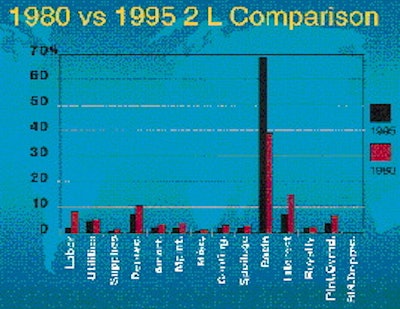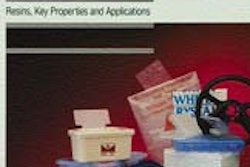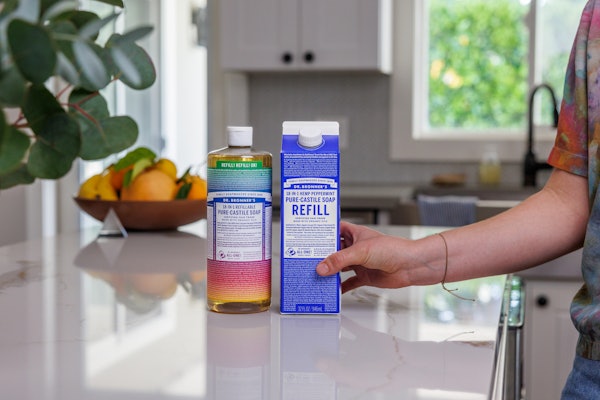
111). A newcomer now attracting lots of interest among packaging professionals, PEN's high-performance properties make it suitable for hot fills like jams and jellies, returnable-refillable bottles that require hot-wash and chemical resistance, and small one-way bottles requiring enhanced oxygen and carbon dioxide barrier. For Listerine Cool Mint mouthwash, Warner-Lambert Japan has introduced a new package in sizes from 80 to 700 mL (2.70 to 23.66 oz). In this blend of polyethylene terephthalate and PEN, PEN's function is to prevent the product's active ingredients from adsorbing into the bottle's sidewalls. While the one-way Listerine bottle is a PET/PEN blend in which PET is by far the dominant component, the returnable/refillable Bonaqua water bottle shown here is made totally of PEN homopolymer selected for its unique chemical resistance and its ability to withstand elevated washing temperatures. Bonaqua was introduced in the new package last month in Uruguay by Montevideo Refrescos S.A., a bottler of Atlanta-based Coca-Cola Co. The test will help Coke learn if PEN is a better refillable/reusable container material than the PET copolymer now used in parts of Europe and South America. This is the first major field test of a bottle blown completely from PEN homopolymer. The raw material for PEN resin is naphthalate dicarboxylate, or NDC, which comes from Amoco. Cleared for food contact in other parts of the world, NDC-based resins are not yet cleared in the U.S. Petitions for food contact have been submitted to the U.S. Food & Drug Administration. Though PEN resin costs four to five times as much as PET, markets worldwide are eagerly investigating its use in structures containing varying percentages to see if its high-performance properties make it worth its cost. Its affordability, of course, can only be gauged relative to the cost of other materials, including PET. And as Martin Beck of DevTech Labs (Am-herst, NH) made clear in his Bev-Pak paper, PET hasn't gotten any cheaper. Beck presented conference attendees with a cost analysis of a typical one-way 2-L PET soft drink bottle today compared to 1980. Beck's "snapshot" is shown here. It's a plant level cost analysis that does not include costs that may be associated with R&D, sales and marketing, corporate overhead, and so on. "With rapid increases in the PET resin price that are now ongoing, the PET resin cost may go from being [roughly] two-thirds the cost to well over three-fourths," said Beck. Sponsored by Directions 21 (Sarasota, FL), Bev-Pak Americas '95 was held April 24-25 in Tarpon Springs, FL. Proceedings are available for $280.






















